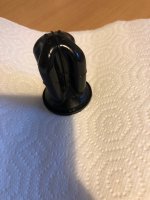The brake pedal/master cylinder rarely moves full stroke. However the clutch almost always moves full stroke and gets used 10x as often as the brakes. Unsurprisingly the cylinders and seals get worn. Unless you "drop" the clutch pedal, the slave is always under pressure with the clutch pushing it back. Slaves wear of course but seals rarely leak and might hide a knackered cylinder. Wear in the master can cause air to get sucked past the seals. This gives that pedal to the floor effect.
Clutch fluid level should not fall as the clutch itself wears. It might actually rise. If the level is dropping you need to find the leak.
If the clutch is heavy and releasing near the top of pedal travel, you have a worn clutch. Eventually it wont release at all and you'll over stress the hydraulics.
If the clutch is not releasing properly or the pedal sticks down, you'll need to bleed the system. If the pedal improves you probably have worn master seals letting in air. New master cylinder required. It makes sense to replace the slave at the same time. Shop around carefully as some versions are silly money.






